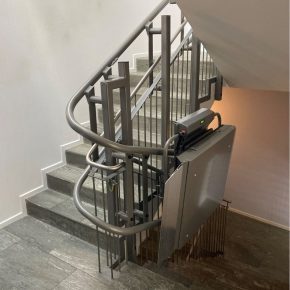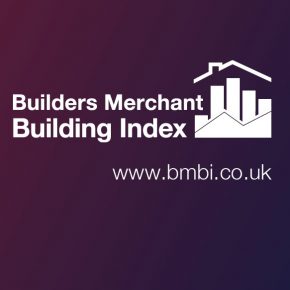
Ensuring Home Safety Through Electrical Compliance
Imagine discovering your dream home has dangerous electrical issues after you’ve already moved in. This scenario, unfortunately, plays out more often than you’d think. With electrical faults causing approximately 14,000 house fires annually in the UK, understanding electrical compliance isn’t just about ticking boxes – it’s about protecting your investment and your family. Whether you’re a first-time buyer, a current homeowner, or looking to sell, electrical safety certification offers peace of mind and can significantly boost your property’s market value.
Why Electrical Safety Matters for Your Home
Your home’s electrical system works silently in the background, powering everything from essential appliances to entertainment systems. But like any crucial system, it needs regular attention. An Electrical Installation Condition Report (EICR) serves as your home’s electrical health check, revealing potential issues before they become expensive—or dangerous—problems.
Homes with updated electrical systems and current safety certificates are more attractive to buyers, as they remove the need for immediate repairs, making the property move-in ready and more desirable. Beyond the financial benefits, proper electrical certification protects you from legal complications, especially if you’re planning to rent out your property or sell in the future.
Understanding Safety Classifications That Matter to You
When you receive an EICR report, you’ll encounter three important classifications that determine how quickly you need to act:
– C1 (Danger Present): These issues pose immediate risk and require instant attention. For example, exposed live wiring or a risk of electric shock needs immediate repair to keep your family safe.
– C2 (Potentially Dangerous): While not immediately dangerous, these issues could become hazardous under certain conditions. Addressing them promptly prevents them from escalating into more serious problems.
– C3 (Improvement Recommended): These are advisory notices. While not safety-critical, addressing these recommendations can enhance your home’s electrical efficiency and prevent future issues.
Preventing Fire Risks Through Regular Assessment
The relationship between proper electrical maintenance and fire prevention is well-documented by safety organizations across the UK. Regular EICRs play a vital role in identifying potential fire hazards before they develop into serious threats.
This preventive approach proves particularly valuable in older properties, where aging electrical systems may not meet current safety standards. Common issues identified during inspections often include deteriorating insulation, overloaded circuits, and inadequate safety devices. Each of these conditions can contribute to fire risks if left unaddressed.
In this context, it’s important to consider this recent insight from a domestic EICR expert, which highlights the prevalence of outdated wiring systems in older homes and underscores the importance of regular inspections to ensure compliance with current safety standards.
Making Electrical Compliance Work for Your Budget
Worried about the cost? A standard EICR inspection typically costs between £150 and £300—about the same as a single month’s energy bill for many households. This investment can help you:
– Avoid costly emergency repairs that often run into thousands of pounds
– Reduce your energy bills by identifying inefficient installations
– Potentially lower your home insurance premiums
– Increase your property’s value when it’s time to sell

Think of electrical testing as preventive medicine for your home. Regular check-ups catch issues early, saving you money and stress in the long run.
Simple Steps to Prepare for Your Electrical Inspection
Getting ready for an electrical inspection doesn’t have to be complicated. Start by:
– Creating a list of any electrical concerns you’ve noticed, like flickering lights or warm outlets
– Ensuring clear access to all electrical points, including those behind furniture
– Gathering any documentation from previous electrical work
– Making note of any recent home improvements that might have affected electrical systems
Protecting Your Investment: Ongoing Maintenance Tips
Once your electrical system gets the all-clear, maintain its good condition with these straightforward practices:
– Regular visual checks: Look for warning signs like discoloured sockets, unusual smells, or buzzing sounds.
– Test safety devices monthly: Modern homes have several electrical safety features, including RCD (Residual Current Device) protection. Testing these monthly using their test buttons helps ensure they’ll work when needed.
– Document any electrical modifications: Whether it’s installing new lighting or adding outlets, keep records of all electrical work. This documentation proves valuable during future inspections or when selling your property.
When to Seek Professional Help
Some warning signs should prompt immediate professional attention:
– Frequent circuit breaker trips: This might indicate an overloaded system needing urgent assessment.
– Burning smells: No matter how faint, these warrant immediate investigation by a qualified electrician.
– Warm outlets: Even seemingly minor issues, like outlets that feel warm to the touch, could signal potentially serious problems.
Looking to the Future: Smart Electrical Upgrades
Consider taking your electrical safety to the next level with modern upgrades. Smart circuit breakers can now monitor your electrical system in real-time, alerting you to potential issues before they become problems. While these upgrades represent an additional investment, they often pay for themselves through improved energy efficiency and prevention of costly electrical emergencies.
Latest news

3rd January 2025
Stannah announces new addition to platform range with Stairiser CR2
Stannah, a leader in the UK lifts sector, announces an innovative new addition to its Stairiser platform lift range – the Stairiser CR2.
Posted in Access Control & Door Entry Systems, Accessibility, Articles, Building Industry News, Building Products & Structures, Building Regulations & Accreditations, Building Services, Facility Management & Building Services, Health & Safety, Innovations & New Products, Lifts, Restoration & Refurbishment, Retrofit & Renovation, Security and Fire Protection
18th December 2024
BMBI: October Merchant sales rally with a +7.3% month-on-month increase
The latest Builders Merchant Building Index (BMBI) report shows builders’ merchants’ value sales in October were up +1.2% compared to the same month last year.
Posted in Articles, Bathrooms & Toilets, Bricks & Blocks, Building Associations & Institutes, Building Industry News, Building Products & Structures, Building Services, Building Systems, Civil Engineering, Cladding, Concrete, Cement, Admixtures, Drainage, Drainage Services, Floors, Garden, Hand Tools, Hard Landscaping & Walkways, Health & Safety, Heating Systems, Controls and Management, Heating, Ventilation and Air Conditioning - HVAC, Information Technology, Interior Design & Construction, Interiors, Landscaping, news, Paints, Paints, Coatings & Finishes, Pipes, Pipes & Fittings, Plant, Equipment and Hire, Plumbing, Power Tools, Publications, Research & Materials Testing, Restoration & Refurbishment, Retrofit & Renovation, Site Preparation, Sustainability & Energy Efficiency, Timber Buildings and Timber Products, Walls, Waste Management & Recycling
18th December 2024
GEZE UK announce Kids' Village charity partnership
Kids’ Village is delighted to have partnered with GEZE UK as their 2025 charity of the year – find out more via the article…
Posted in Access Control & Door Entry Systems, Architectural Ironmongery, Articles, Building Industry Events, Building Industry News, Building Products & Structures, Building Services, Charity work, Doors, Facility Management & Building Services, Health & Safety, Restoration & Refurbishment, Retrofit & Renovation, Security and Fire Protection, Windows
18th December 2024
Encon Achieves 5% Club Silver Membership
The Encon Group, the leading independent distributor of building materials, is pleased to announce that it has been awarded Silver membership of The 5% Club by the 2024/25 Employer Audit Scheme.
Posted in Articles, Awards, Bricks & Blocks, Building Associations & Institutes, Building Industry Events, Building Industry News, Building Products & Structures, Building Regulations & Accreditations, Building Services, Building Systems, Civil Engineering, Cladding, Concrete, Cement, Admixtures, Facades, Hard Landscaping & Walkways, Health & Safety, Insulation, Landscaping, Plant, Equipment and Hire, Recruitment, Restoration & Refurbishment, Retrofit & Renovation, Site Preparation, Training, Walls
 Sign up:
Sign up: